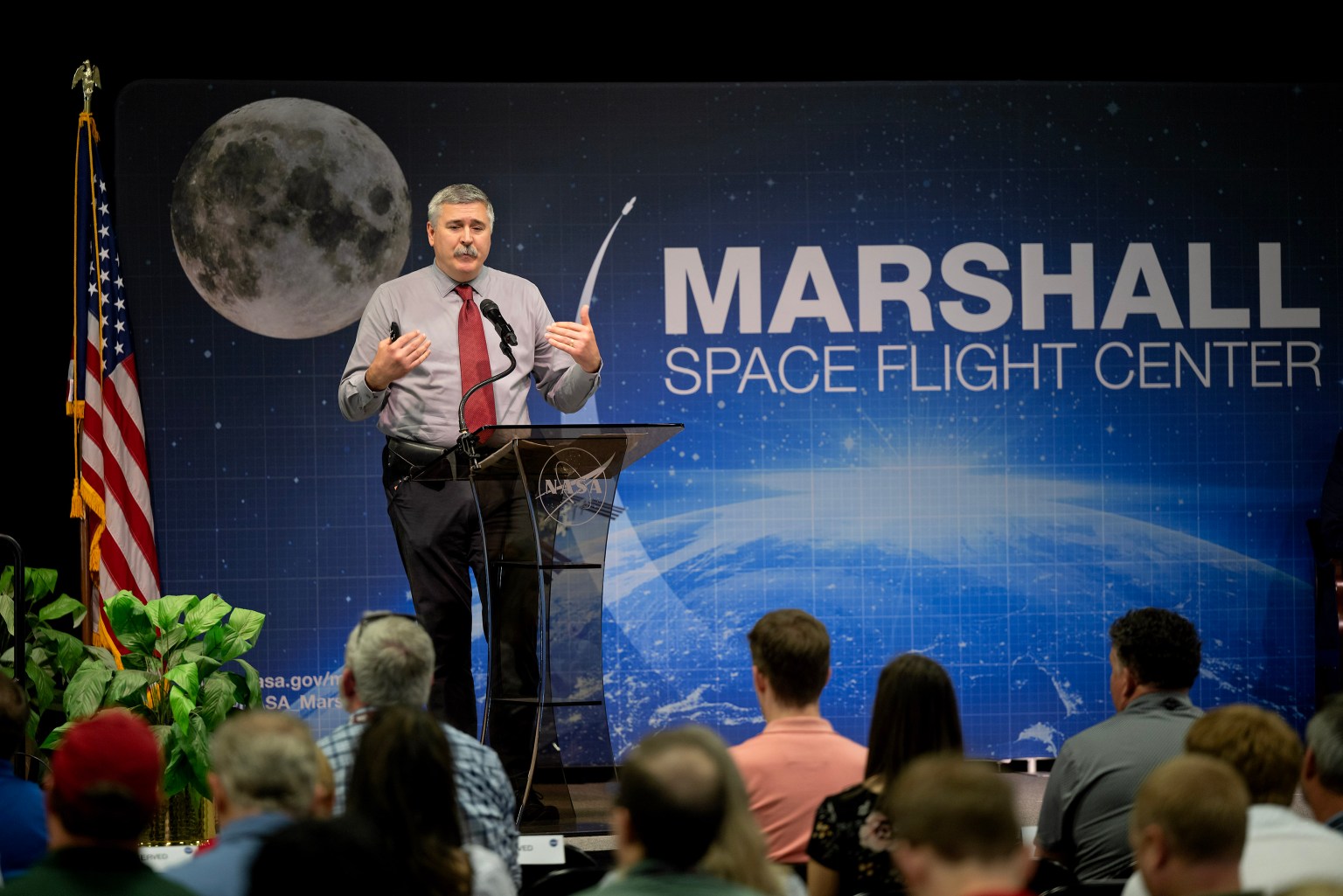
Marshall Director Joseph Pelfrey Addresses Space and Missile Defense Symposium
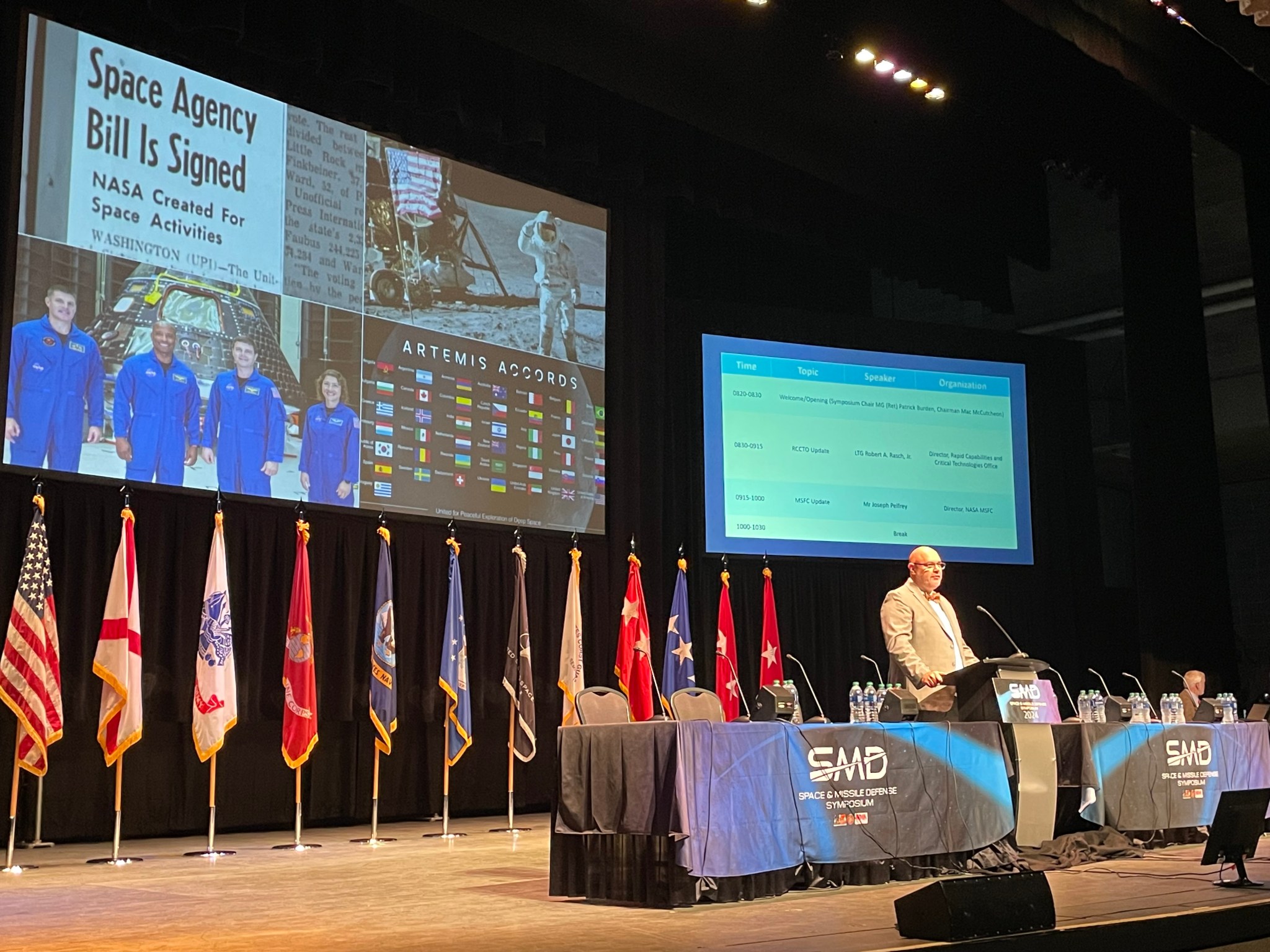
NASA Marshall Space Flight Center Director Joseph Pelfrey gives a keynote address during the 2024 Space and Missile Defense Symposium on Aug. 8 at the Von Braun Center in downtown Huntsville. Pelfrey shared updates on programs and projects that Marshall is leading for the agency, and highlighted strategic partnerships that have used Marshall's deep technical expertise. More than 7,000 people attended this year's symposium, including leaders and stakeholders from across the aerospace industry and Department of Defense. "Many of our partners are in this room, and I want to reiterate the importance of our current collaborations - as well as those that are to come," Pelfrey said. "Marshall is committed to building relationships and sharing resources to further the aerospace industry and aid national security." (NASA)
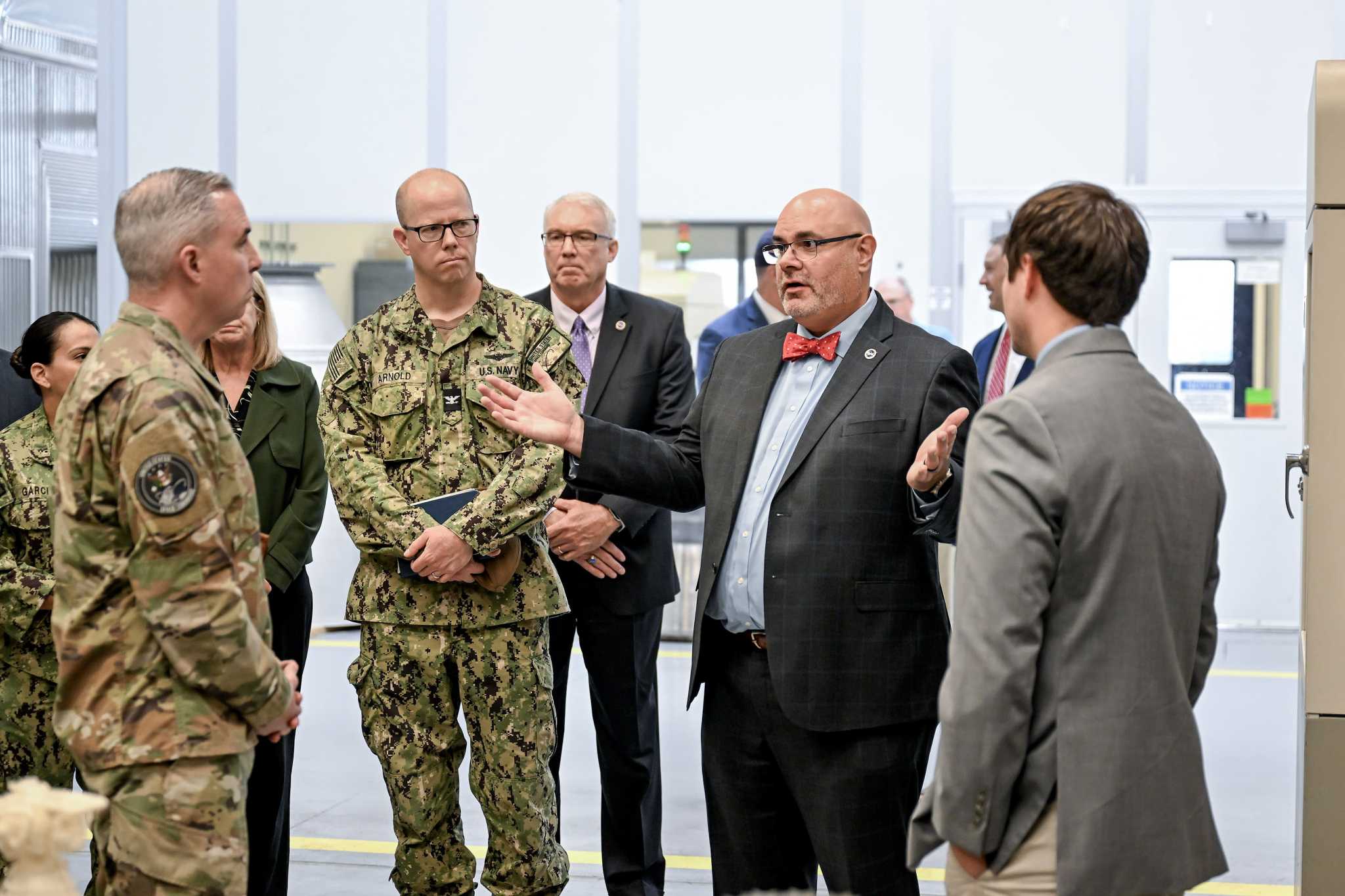
NASA's Marshall Space Flight Center hosted Gen. Stephen Whiting, Commander, U.S. Space Command, and his team Aug. 7. The USSPACECOM team was in Huntsville for the 2024 Space and Missile Defense Symposium. Marshall Director Joseph Pelfrey, center right, talks with Gen. Whiting, left, while on a tour of Marshall's Additive Manufacturing Lab. The group also toured the Payload Operations Integration Center and heard presentations from Marshall team members on data science/management and space nuclear propulsion. (NASA/Charles Beason)
Artemis I Lessons Learned Focus of Mission Success Forum; Charlie Adams Receives Golden Eagle Award
By Wayne Smith
Mike Sarafin, Artemis mission manager and mission management team chair, reflected on Artemis I challenges during the Shared Experiences Forum at NASA's Marshall Space Flight Center on Aug. 8.
The event was part of the Mission Success is in Our Hands safety initiative and held in Activities Building 4316.
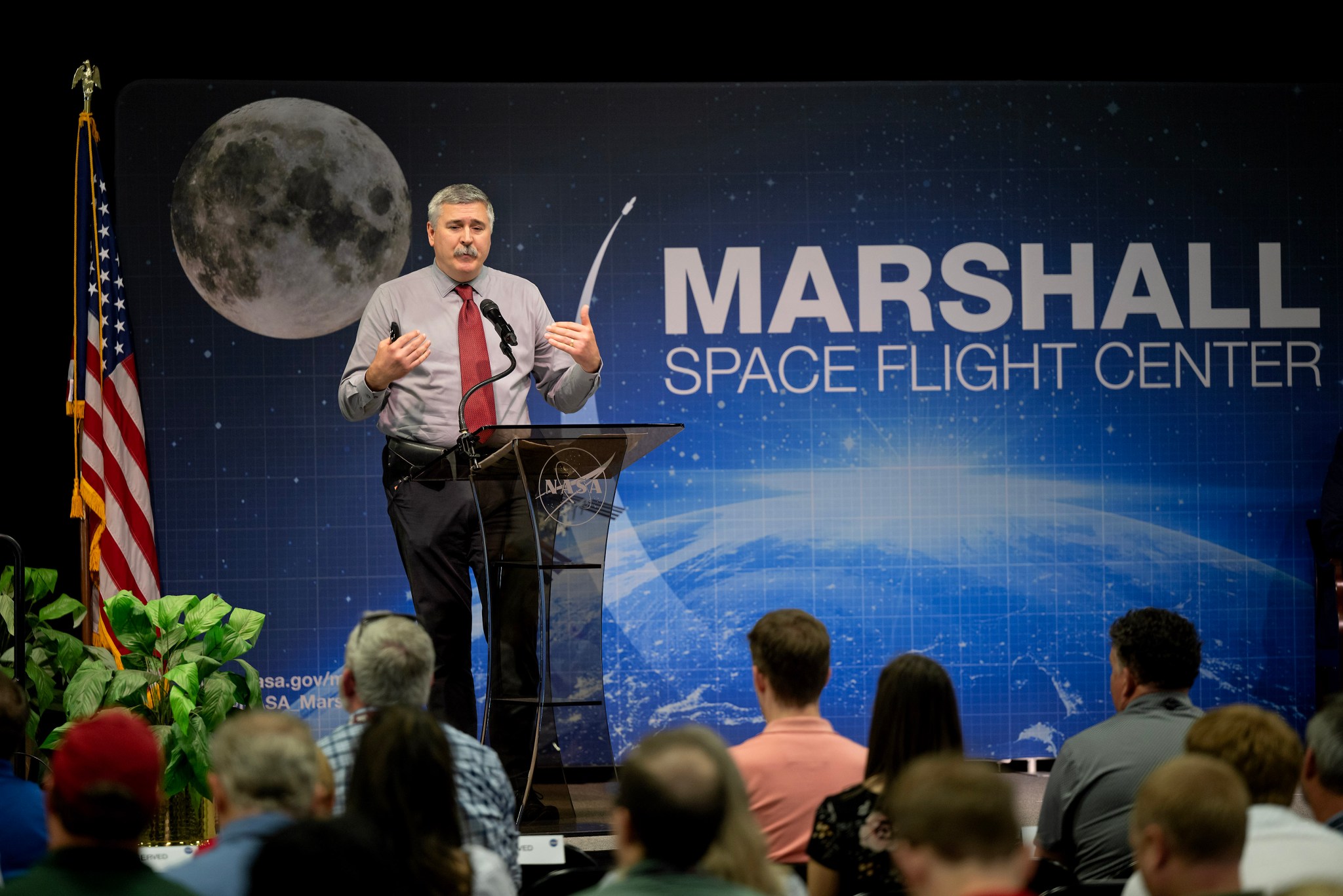
Sarafin discussed lessons learned from Artemis I, highlighting the importance of communicating quickly and effectively with team members and using risk informed decision-making tools. After some initial delays that included lightning strikes, the Artemis I mission began with a successful liftoff of NASA's SLS (Space Launch System) rocket Nov. 16, 2022, from Launch Pad 39B at NASA's Kennedy Space Center. Over the course of 25.5 days, NASA tested the Orion spacecraft in the harsh environment of deep space before flying astronauts on Artemis II.
Sarafin said it was his first time in the "hot seat," and stressed the importance for anyone leading a mission management team to prepare for it by talking with those who have been in the same role, naming the individuals who supported him as team chair.
"You have got to find somebody who has walked a mile in those shoes, who understands the dynamics, who understands the cultural aspects of it," Sarafin said. "They were fantastic team members, fantastic partners to work with, and I am proud to be a part of that team. These guys walked alongside me and kept me out of trouble."
As Artemis mission manager for the Moon to Mars Program Office at NASA Headquarters, Sarafin provides oversight and responsibility for critical decisions across all flight phases (launch, in-space, and recovery), with support from team members and advisers with technical expertise in various areas. Prior to flight, he acts as a senior technical leader integrating mission requirements, planning, operations, and flight readiness leading to mission execution.
Sarafin said lessons learned from the mission management team for Artemis I included training both a prime and alternate for each position. He also pointed out the importance of training for logistics, and daily effective communications for all team members.
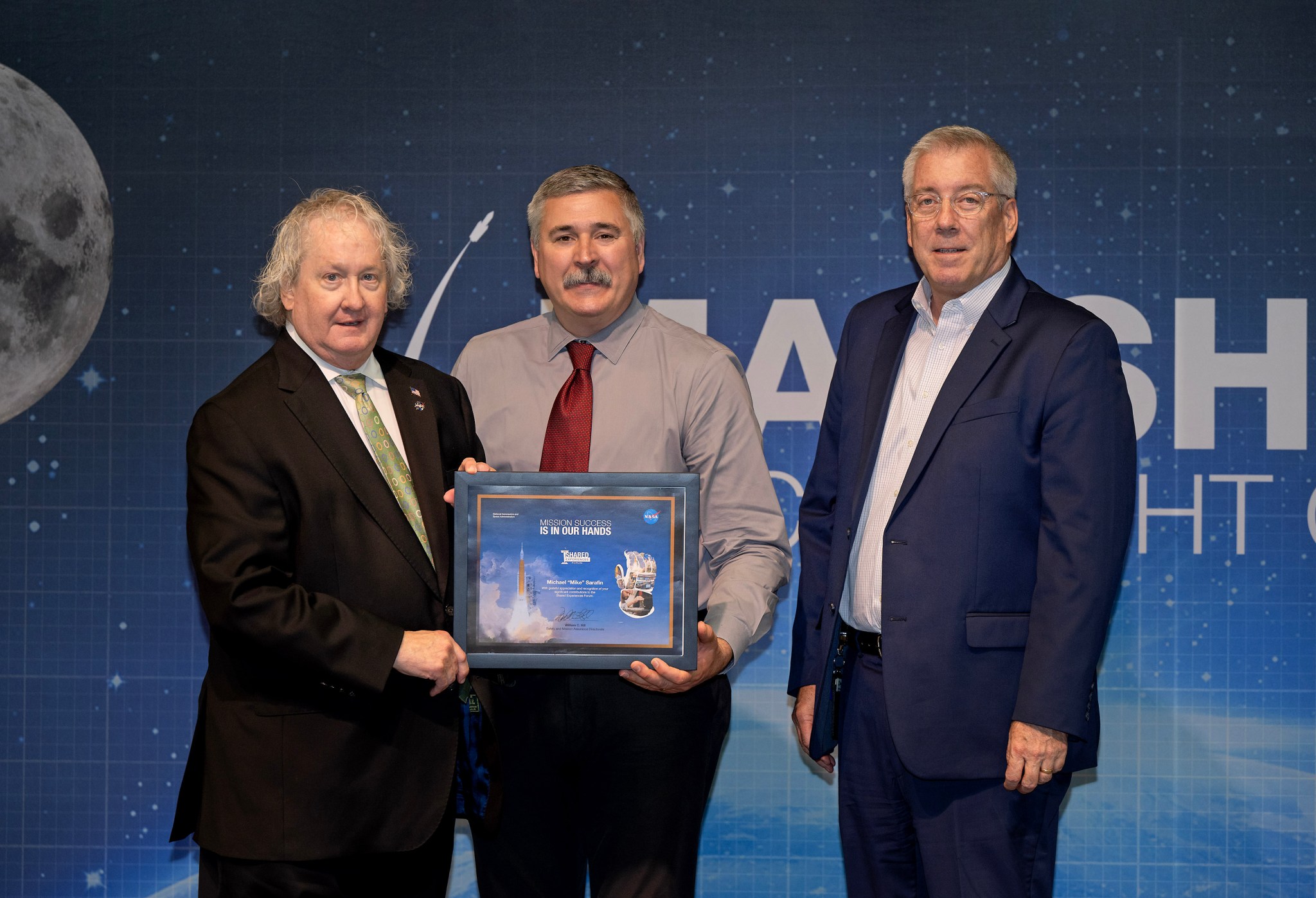
"In summary, have the right team, do your party planning, (and) set clear expectations," Sarafin said. "Take care of yourself and your team, and use good tools to make decisions."
Mission Success is in Our Hands is a safety initiative collaboration between NASA's Marshall Space Flight Center and Jacobs Engineering. The initiative's goal is to help team members make meaningful connections between their jobs and the safety and success of NASA and Marshall missions.
Charlie Adams Presented with Golden Eagle Award
As part of the forum, Mission Success is in Our Hands presented the 40th Golden Eagle Award to Charlie Adams of the Jacobs Space Exploration Group. Adams was the mission manager for NASA's Low-Earth Orbit Flight Test of an Inflatable Decelerator (LOFTID).
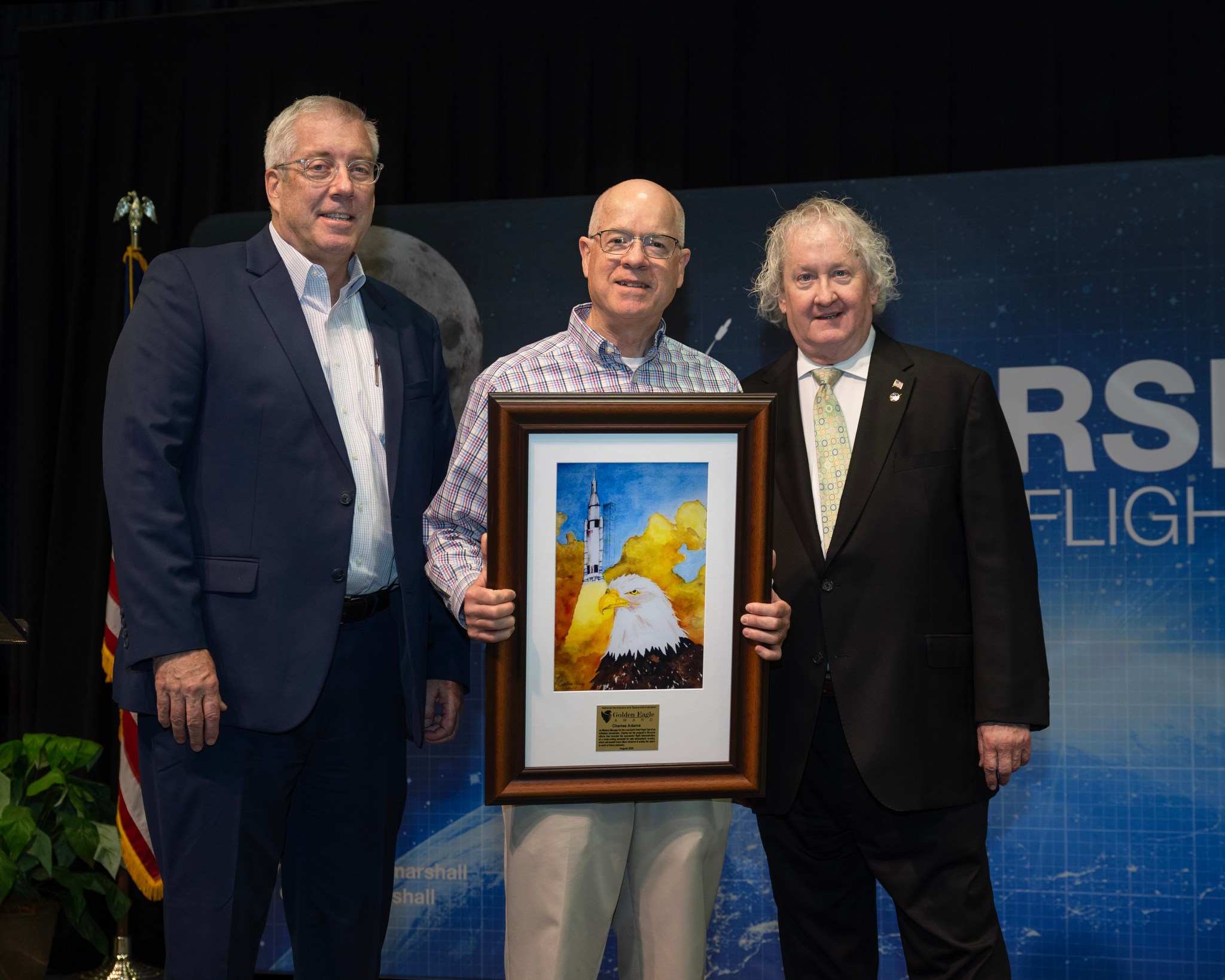
Bill Hill, director of Safety and Mission Assurance at Marshall, said Adams was recognized for leading the project throughout LOFTID's life cycle, which culminated with a successful flight in 2022. Hill said LOFTID's success as a heat shield will benefit NASA's future missions.
The Golden Eagle Award promotes awareness and appreciation for flight safety, as demonstrated through the connections between employees' everyday work, the success of NASA and Marshall's missions, and the safety of NASA astronauts. Management or peers can nominate any team member for the award. Honorees are typically recognized at Shared Experiences forums.
The next Shared Experiences Forum is scheduled for Sept. 5, featuring Dave Dykhoff, former vice president and general manager of the Jacobs Missile Defense Group and the North American Aerospace Defense (NORAD) Operations Group. The forum will be held in Building 4203, Conference Room 1201 for Marshall team members, and available to the public via Teams.
Smith, a Media Fusion employee and the Marshall Star editor, supports the Marshall Office of Communications.
Marshall Team Members Participate in Space Night with Rocket City Trash Pandas
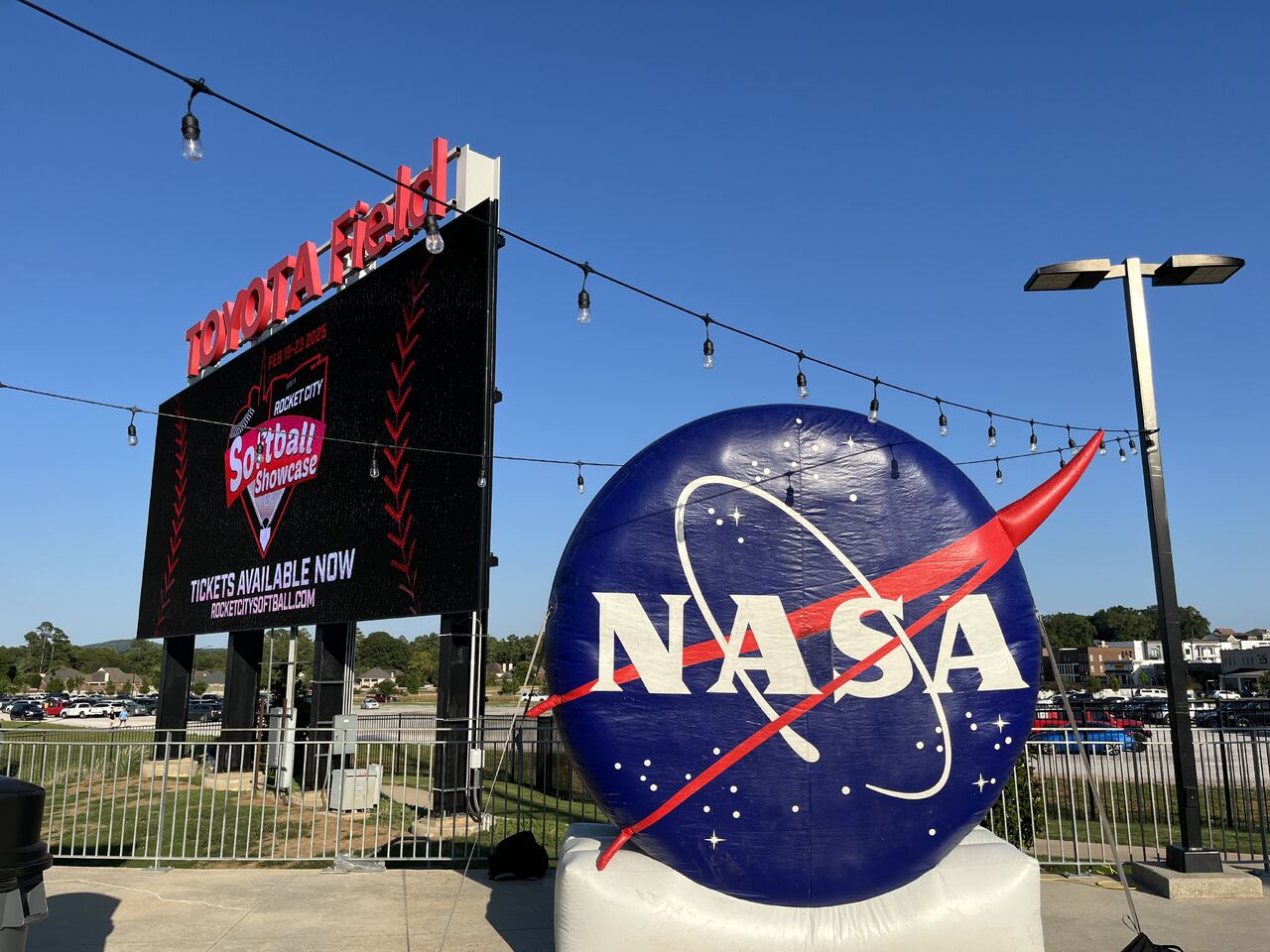
NASA's Marshall Space Flight Center participated in Space Night at the Rocket City Trash Pandas game Aug. 10. Several team members represented the center, talking with fans about Marshall's cutting-edge technologies and missions. The event featured special giveaways, astronaut food samples, and photo opportunities. (NASA/Corinne Beckinger)
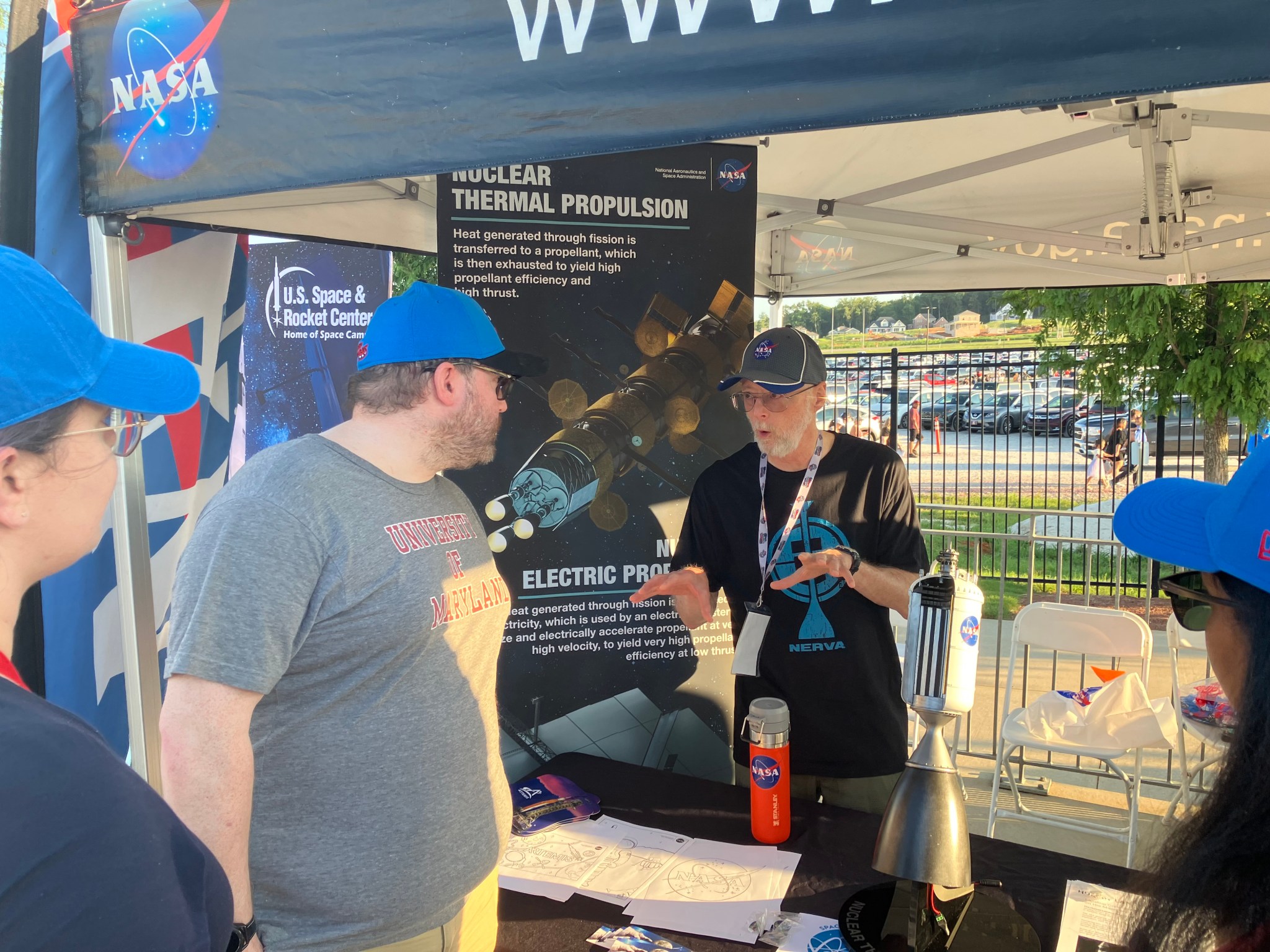
Dave Greeson, center, an aerospace engineer with the Space Nuclear Propulsion Office at Marshall, talks with fans during Space Night with the Rocket City Trash Pandas. (NASA/Daniel Boyette)
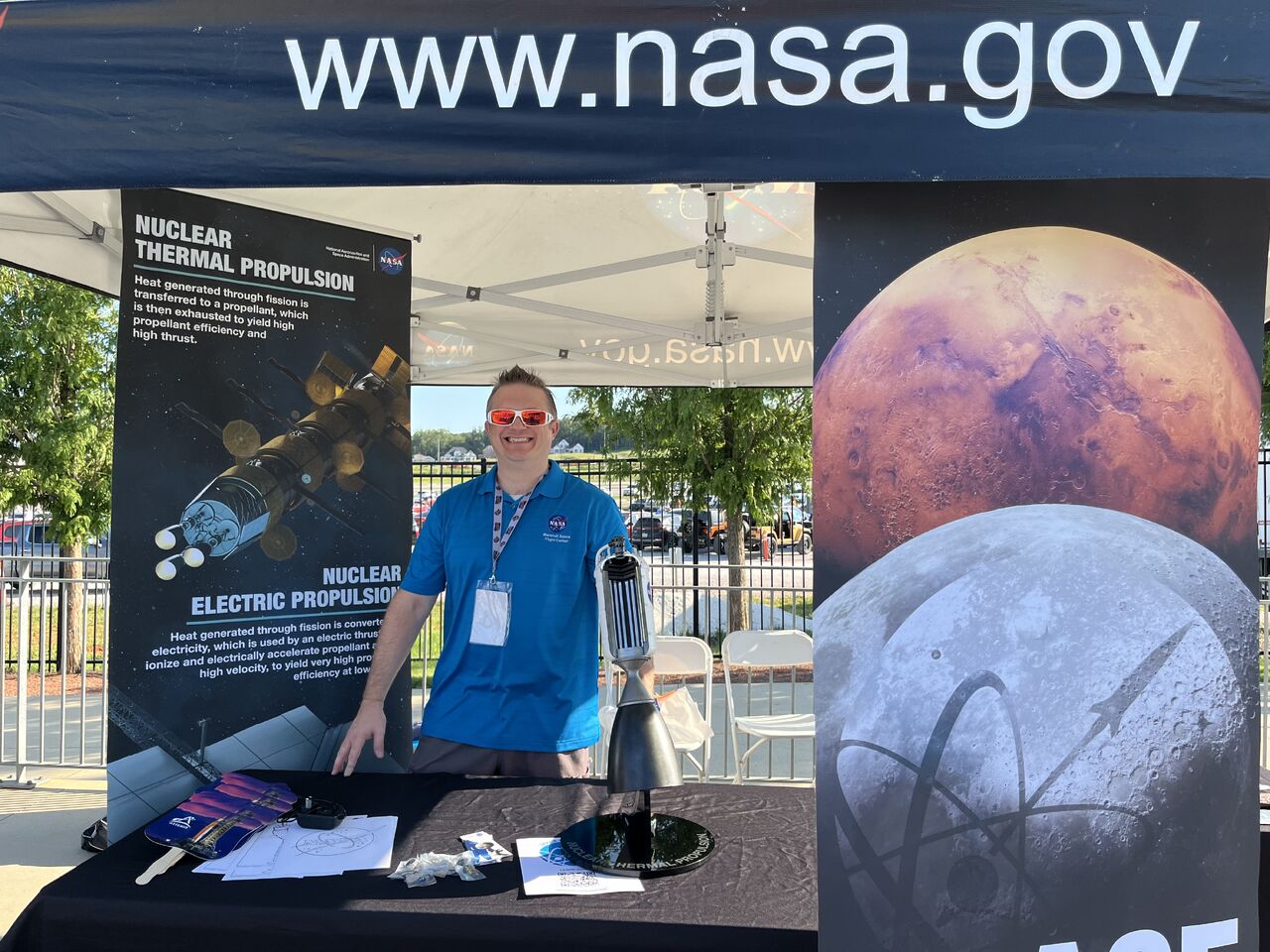
Daniel Boyette, communications specialist for the Space Nuclear Propulsion Office at Marshall, sets up for Space Night. (NASA/Corinne Beckinger)
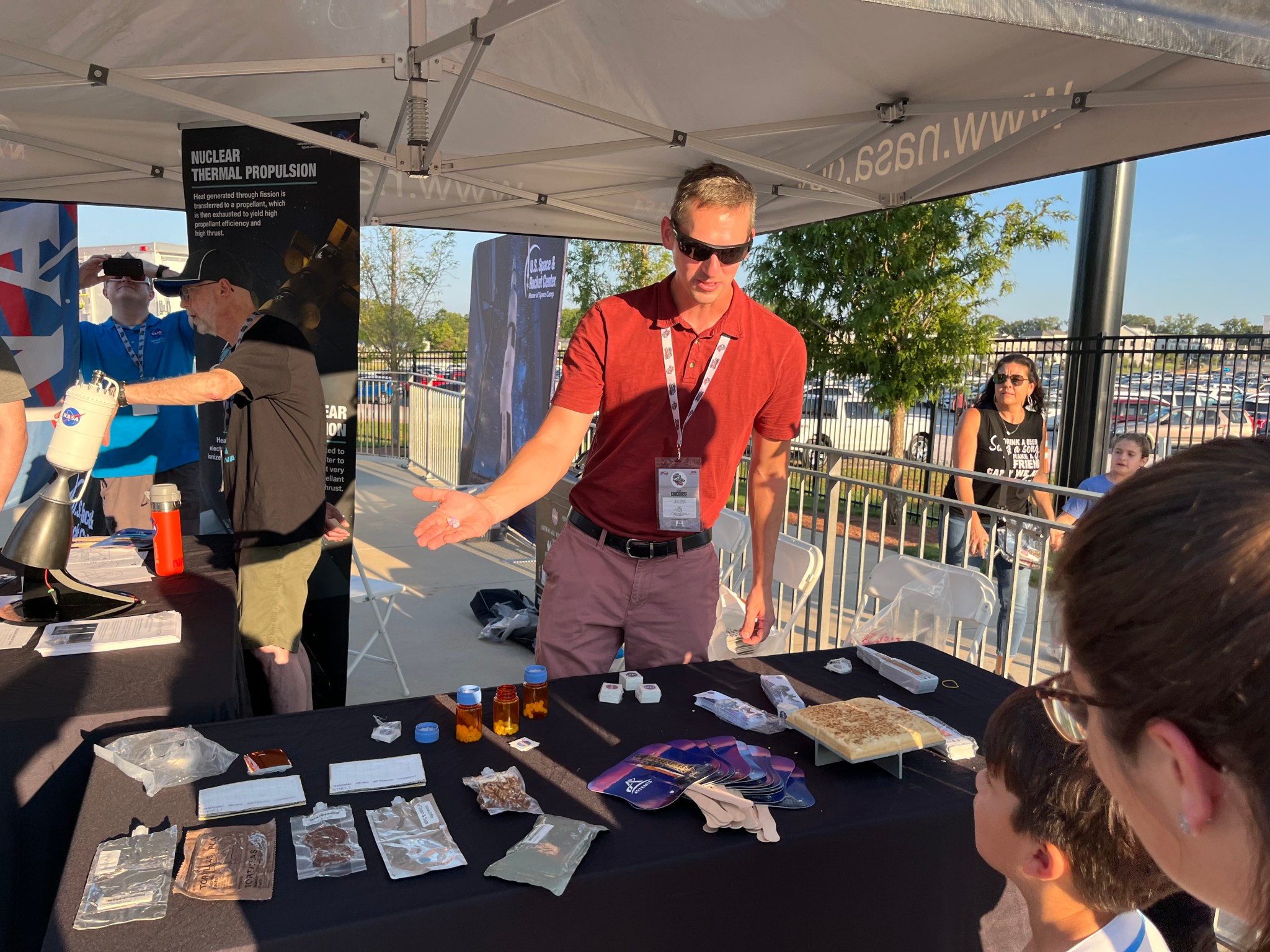
Dustin McMullen, lead ground systems engineer for the Human Landing System Program at Marshall, displays some astronaut food samples at Space Night. (NASA/Corinne Beckinger)
I Am Artemis: Julia Khodabandeh
Unlike most of her friends in the 80s who covered their walls with posters of bands, Julia Khodabandeh plastered hers with posters of rockets and fighter jets.
Khodabandeh's interest in aerospace and aeronautics developed at a young age. Her parents were avid fans of the Apollo Program and were heavily invested in her education. Khodabandeh's father always encouraged her to tackle math and science problems without fear. She recalls him telling her that "you can take any problem and break it into smaller pieces." It's a philosophy she still uses in solving problems today.
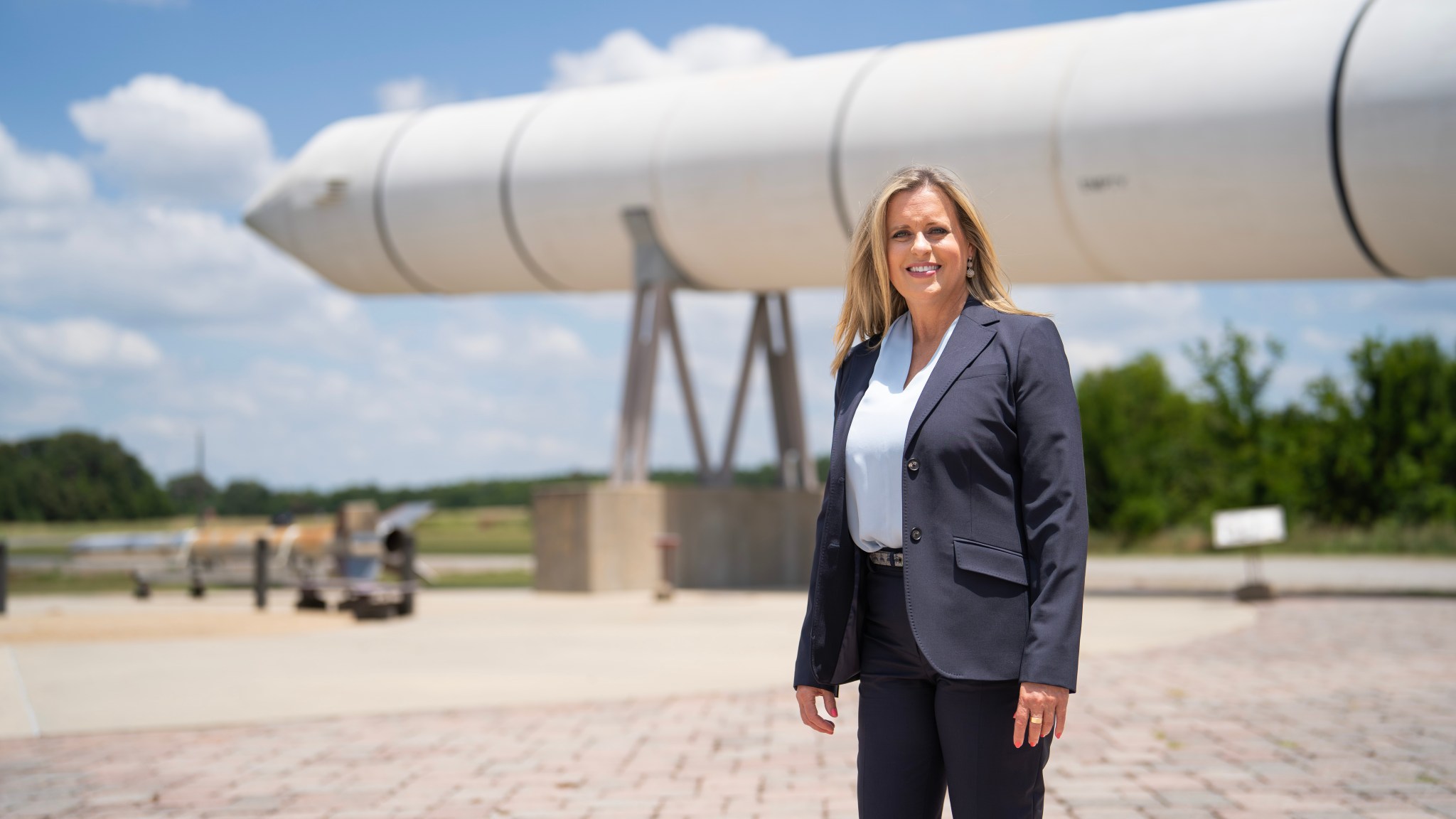
"When I was growing up, my dad would make practice tests the night before my exams," she said. "It helped me feel more prepared. The confidence I developed for math and science and my passion for aeronautics and aerospace, led me to a NASA career."
The better part of her 24-year career with NASA has been dedicated to solid rocket boosters at the agency's Marshall Space Flight Center. Over the past 10 years, she helped develop the twin solid rocket boosters for the agency's SLS (Space Launch System) rocket, which are the largest and most powerful solid propellant boosters ever flown. They stand at 177 feet tall, and individually generate a maximum thrust of 3.6 million pounds. Together, the twin boosters provide more than 75% of the total thrust to launch SLS for NASA's Artemis campaign to the Moon.
Khodabandeh graduated from the University of Alabama in Huntsville with a bachelor's degree in mechanical engineering and a master's degree in computational fluid dynamics. Early in her career, her work focused on Space Station microgravity material processing furnaces and the Space Shuttle Return-to-Flight Program. She went on to support the Ares rocket solid rocket booster team as part of the Constellation Program preceding SLS. Her work on the Ares booster helped guide her to her current position on SLS.
Khodabandeh is the motor and pyrotechnic team lead for the SLS Booster Element Office. She supports design, development, certification, production, and operation of the solid rocket motors, booster separation motors, and pyrotechnics for the twin boosters on SLS. Most days, she manages schedules and helps resolve issues with the help of her team.
"The flight hardware and test hardware are all tremendous accomplishments for the team, and behind these accomplishments are hours, weeks, and months of working together to resolve issues and deliver results," Khodabandeh said. "It's the people that make us successful, and teamwork is my favorite part of what we do. Someone once said, 'You have to build a successful team before you can build successful hardware.' I couldn't agree more!"
In her spare time, Khodabandeh volunteers at a local rescue mission, where she provides aid to women struggling with substance abuse. She also mentors students in the Huntsville community, where she hopes to pass on the confidence her dad instilled in her, inspiring them to one day be a part of NASA and the Artemis Generation.
As the girl who grew up with posters of rockets on her walls, Khodabandeh says she is incredibly excited to be one of the many who are responsible for sending astronauts around the Moon on Artemis II.
"The incredible success of Artemis I is something that I will never forget," she said. "We have demonstrated what we're capable of, and I can't wait to see what we accomplish going forward on the Artemis Program."
NASA is working to land the first woman, first person of color, and its first international partner astronaut on the Moon under Artemis. SLS is part of NASA's backbone for deep space exploration, along with the Orion spacecraft, supporting ground systems, advanced spacesuits and rovers, the Gateway in orbit around the Moon, and commercial human landing systems. SLS is the only rocket that can send Orion, astronauts, and supplies to the Moon in a single launch.
Read other I am Artemis features.
'Legacy of the Invisible' Event to Celebrate Marshall's Contributions to Astrophysics
The public is invited to join NASA's Marshall Space Flight Center for a special celebration of art and astronomy in downtown Huntsville on Aug. 16 from 6 to 8 p.m. The event will include a dedication of Huntsville's newest art installation, "No Straight Lines," by local artist Float.
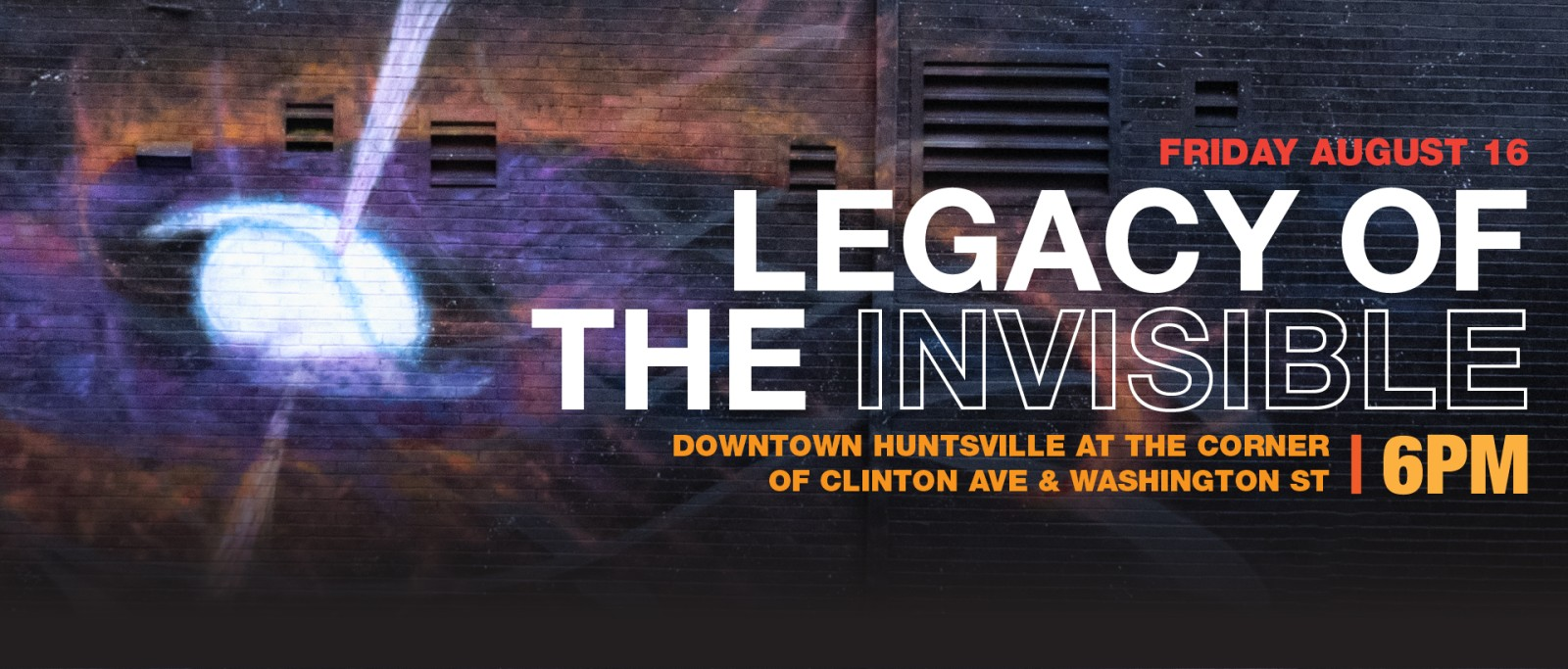
The celebratory event, "Legacy of the Invisible," will take place at the corner of Clinton Avenue and Washington Street, coinciding with the 25th anniversary of the Chandra X-ray Observatory launch on July 23, 1999. Attendees will have a chance to meet and hear from NASA experts, as well as meet Float, the artist behind "No Straight Lines," which aims to honor Huntsville's rich scientific legacy in astrophysics and highlight the groundbreaking discoveries made possible by Huntsville scientists and engineers.
Enjoy live music, art vendors, food, and more.






